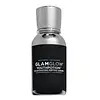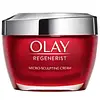What's inside
What's inside
 Key Ingredients
Key Ingredients

 Benefits
Benefits

 Concerns
Concerns

 Ingredients Side-by-side
Ingredients Side-by-side

Betaine
HumectantPorphyridium Cruentum Extract
Skin ConditioningRubus Idaeus Leaf Extract
Skin ConditioningAcetyl Hexapeptide-8
HumectantCaffeine
Skin ConditioningTocopheryl Acetate
AntioxidantSodium Hyaluronate
HumectantCastanea Sativa Seed Extract
Skin ConditioningPalmitoyl Hexapeptide-12
Skin ConditioningGlycerin
HumectantSigesbeckia Orientalis Extract
Skin ConditioningPrunus Amygdalus Dulcis Seed Extract
Skin ConditioningHordeum Vulgare Extract
EmollientTriticum Vulgare Germ Extract
Skin ConditioningEthylhexylglycerin
Skin ConditioningAcetyl Glucosamine
Skin ConditioningCaprylic/Capric Triglyceride
MaskingCentaurium Erythraea Extract
Skin ConditioningCetearyl Olivate
Squalane
EmollientCommiphora Mukul Resin Extract
Skin ConditioningMicrococcus Lysate
Skin ConditioningLecithin
EmollientDehydroxanthan Gum
Emulsion StabilisingSorbitan Olivate
EmulsifyingDecarboxy Carnosine Hcl
Skin ConditioningAmmonium Acryloyldimethyltaurate/Vp Copolymer
Butylene Glycol
HumectantGlyceryl Polymethacrylate
PEG-8
HumectantParfum
MaskingLimonene
PerfumingTocopherol
AntioxidantDisodium EDTA
Phenoxyethanol
PreservativeSodium Benzoate
MaskingPotassium Sorbate
PreservativeMica
Cosmetic ColorantCI 77891
Cosmetic ColorantCI 77491
Cosmetic ColorantCI 77499
Cosmetic ColorantCI 17200
Cosmetic ColorantCI 15985
Cosmetic ColorantBetaine, Porphyridium Cruentum Extract, Rubus Idaeus Leaf Extract, Acetyl Hexapeptide-8, Caffeine, Tocopheryl Acetate, Sodium Hyaluronate, Castanea Sativa Seed Extract, Palmitoyl Hexapeptide-12, Glycerin, Sigesbeckia Orientalis Extract, Prunus Amygdalus Dulcis Seed Extract, Hordeum Vulgare Extract, Triticum Vulgare Germ Extract, Ethylhexylglycerin, Acetyl Glucosamine, Caprylic/Capric Triglyceride, Centaurium Erythraea Extract, Cetearyl Olivate, Squalane, Commiphora Mukul Resin Extract, Micrococcus Lysate, Lecithin, Dehydroxanthan Gum, Sorbitan Olivate, Decarboxy Carnosine Hcl, Ammonium Acryloyldimethyltaurate/Vp Copolymer, Butylene Glycol, Glyceryl Polymethacrylate, PEG-8, Parfum, Limonene, Tocopherol, Disodium EDTA, Phenoxyethanol, Sodium Benzoate, Potassium Sorbate, Mica, CI 77891, CI 77491, CI 77499, CI 17200, CI 15985
Water
Skin ConditioningGlycerin
HumectantIsohexadecane
EmollientNiacinamide
SmoothingIsopropyl Isostearate
EmollientAluminum Starch Octenylsuccinate
AbsorbentNylon-12
Dimethicone
EmollientPanthenol
Skin ConditioningTocopheryl Acetate
AntioxidantPalmitoyl Pentapeptide-4
Skin ConditioningSodium PEG-7 Olive Oil Carboxylate
EmulsifyingSodium Hyaluronate
HumectantCaprylic/Capric Triglyceride
MaskingCeratonia Siliqua Fruit Extract
MaskingStearyl Alcohol
EmollientPolyethylene
AbrasiveCetyl Alcohol
EmollientBehenyl Alcohol
EmollientSodium Acrylates Copolymer
Titanium Dioxide
Cosmetic ColorantBenzyl Alcohol
PerfumingMethylparaben
PreservativeEthylparaben
PreservativeDimethiconol
EmollientPolyacrylamide
Parfum
MaskingPEG-100 Stearate
Propylparaben
PreservativeCetearyl Glucoside
EmulsifyingCetearyl Alcohol
EmollientC13-14 Isoparaffin
EmollientDisodium EDTA
Citric Acid
BufferingStearic Acid
CleansingPalmitic Acid
EmollientC12-13 Pareth-3
EmulsifyingLaureth-7
EmulsifyingSodium Hydroxide
BufferingMica
Cosmetic ColorantWater, Glycerin, Isohexadecane, Niacinamide, Isopropyl Isostearate, Aluminum Starch Octenylsuccinate, Nylon-12, Dimethicone, Panthenol, Tocopheryl Acetate, Palmitoyl Pentapeptide-4, Sodium PEG-7 Olive Oil Carboxylate, Sodium Hyaluronate, Caprylic/Capric Triglyceride, Ceratonia Siliqua Fruit Extract, Stearyl Alcohol, Polyethylene, Cetyl Alcohol, Behenyl Alcohol, Sodium Acrylates Copolymer, Titanium Dioxide, Benzyl Alcohol, Methylparaben, Ethylparaben, Dimethiconol, Polyacrylamide, Parfum, PEG-100 Stearate, Propylparaben, Cetearyl Glucoside, Cetearyl Alcohol, C13-14 Isoparaffin, Disodium EDTA, Citric Acid, Stearic Acid, Palmitic Acid, C12-13 Pareth-3, Laureth-7, Sodium Hydroxide, Mica
 Reviews
Reviews

Ingredients Explained
These ingredients are found in both products.
Ingredients higher up in an ingredient list are typically present in a larger amount.
This ingredient is an emollient, solvent, and texture enhancer. It is considered a skin-softener by helping the skin prevent moisture loss.
It helps thicken a product's formula and makes it easier to spread by dissolving clumping compounds.
Caprylic Triglyceride is made by combining glycerin with coconut oil, forming a clear liquid.
While there is an assumption Caprylic Triglyceride can clog pores due to it being derived from coconut oil, there is no research supporting this.
Learn more about Caprylic/Capric TriglycerideDisodium EDTA plays a role in making products more stable by aiding other preservatives.
It is a chelating agent, meaning it neutralizes metal ions that may be found in a product.
Disodium EDTA is a salt of edetic acid and is found to be safe in cosmetic ingredients.
Learn more about Disodium EDTAGlycerin is already naturally found in your skin. It helps moisturize and protect your skin.
A study from 2016 found glycerin to be more effective as a humectant than AHAs and hyaluronic acid.
As a humectant, it helps the skin stay hydrated by pulling moisture to your skin. The low molecular weight of glycerin allows it to pull moisture into the deeper layers of your skin.
Hydrated skin improves your skin barrier; Your skin barrier helps protect against irritants and bacteria.
Glycerin has also been found to have antimicrobial and antiviral properties. Due to these properties, glycerin is often used in wound and burn treatments.
In cosmetics, glycerin is usually derived from plants such as soybean or palm. However, it can also be sourced from animals, such as tallow or animal fat.
This ingredient is organic, colorless, odorless, and non-toxic.
Glycerin is the name for this ingredient in American English. British English uses Glycerol/Glycerine.
Learn more about GlycerinMica is a naturally occurring mineral used to add shimmer and color in cosmetics. It can also help improve the texture of a product or give it an opaque, white/silver color.
Serecite is the name for very fine but ragged grains of mica.
This ingredient is often coated with metal oxides like titanium dioxide. Trace amounts of heavy metals may be found in mica, but these metals are not harmful in our personal products.
Mica has been used since prehistoric times throughout the world. Ancient Egyptian, Indian, Greek, Roman, Aztec, and Chinese civilizations have used mica.
Learn more about MicaParfum is a catch-all term for an ingredient or more that is used to give a scent to products.
Also called "fragrance", this ingredient can be a blend of hundreds of chemicals or plant oils. This means every product with "fragrance" or "parfum" in the ingredients list is a different mixture.
For instance, Habanolide is a proprietary trade name for a specific aroma chemical. When used as a fragrance ingredient in cosmetics, most aroma chemicals fall under the broad labeling category of “FRAGRANCE” or “PARFUM” according to EU and US regulations.
The term 'parfum' or 'fragrance' is not regulated in many countries. In many cases, it is up to the brand to define this term.
For instance, many brands choose to label themselves as "fragrance-free" because they are not using synthetic fragrances. However, their products may still contain ingredients such as essential oils that are considered a fragrance by INCI standards.
One example is Calendula flower extract. Calendula is an essential oil that still imparts a scent or 'fragrance'.
Depending on the blend, the ingredients in the mixture can cause allergies and sensitivities on the skin. Some ingredients that are known EU allergens include linalool and citronellol.
Parfum can also be used to mask or cover an unpleasant scent.
The bottom line is: not all fragrances/parfum/ingredients are created equally. If you are worried about fragrances, we recommend taking a closer look at an ingredient. And of course, we always recommend speaking with a professional.
Learn more about ParfumSodium Hyaluronate is hyaluronic acid's salt form. It is commonly derived from the sodium salt of hyaluronic acid.
Like hyaluronic acid, it is great at holding water and acts as a humectant. This makes it a great skin hydrating ingredient.
Sodium Hyaluronate is naturally occurring in our bodies and is mostly found in eye fluid and joints.
These are some other common types of Hyaluronic Acid:
Learn more about Sodium HyaluronateTocopheryl Acetate is AKA Vitamin E. It is an antioxidant and protects your skin from free radicals. Free radicals damage the skin by breaking down collagen.
One study found using Tocopheryl Acetate with Vitamin C decreased the number of sunburned cells.
Tocopheryl Acetate is commonly found in both skincare and dietary supplements.
Learn more about Tocopheryl Acetate